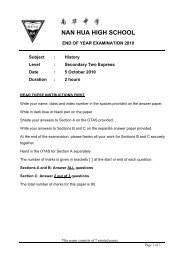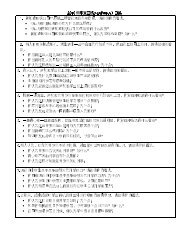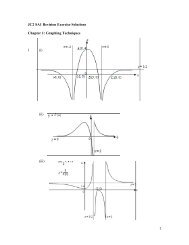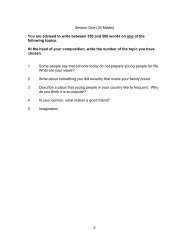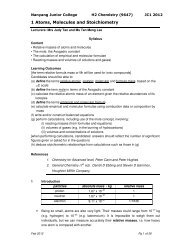Suggested Answers of BT2 Revision Package - ASKnLearn
Suggested Answers of BT2 Revision Package - ASKnLearn
Suggested Answers of BT2 Revision Package - ASKnLearn
- No tags were found...
Create successful ePaper yourself
Turn your PDF publications into a flip-book with our unique Google optimized e-Paper software.
Thinking processExcessiveincrease in price- Explain causes <strong>of</strong>an increase in priceBodyPrice increases can be caused by a rise in demand or a fall in thesupply <strong>of</strong> a good. Assuming that the market is initially in equilibrium, atprice P and quantity Q, an increase in the demand from D to D 1 willlead to a shortage at the current price. Upward pressure on priceresults in price rising to P 1 .Price Figure 2S 1SCauses <strong>of</strong> an Increasein PriceP 2PP 1QD 1DQuantityQ 1Similarly, for a market at an initial equilibrium at price P 1 and quantityQ 1 , a fall in the supply <strong>of</strong> the good from S to S 1 will lead to upwardpressure on prices, causing price to rise to P 2 .Thus, an increase in price can be brought about by an increase indemand, a fall in supply or a combination <strong>of</strong> both. If the situation isprolonged, an excessive increase in price results.On the other hand, a fall in demand would lead to a surplus <strong>of</strong> the goodat current prices, leading to fall in its market price. A rise in supply willalso lead to a fall in price. Thus, a fall in the price <strong>of</strong> a good can becaused by a fall in demand, a rise in supply or a combination <strong>of</strong> both. Ifthe situation is prolonged, an excessive decrease in price may result.The situation is worsened if the demand and supply <strong>of</strong> a good isrelatively inelastic. In such cases, any change in demand and supplycan lead to sharp changes in price. This is especially true in primarymarkets for raw materials and agricultural products. Such excessivechanges in price can worsen economic problems such as inflation orthe distribution <strong>of</strong> income. Thus the government attempt to curb priceincreases through the use <strong>of</strong> price controls.Define price ceilingExplain why thegovernmentimposes them,giving examples.Price ceilings are maximum prices set below the market equilibriumprice so as to lower prices and to prevent further price increases Thiscan be done to achieve a lower rate <strong>of</strong> inflation by keeping the prices <strong>of</strong>necessities and raw materials low; or, to improve income distribution tokeep the price <strong>of</strong> necessities affordable, e.g. rent controls to keep theprice <strong>of</strong> rental housing affordable.Referring to Figure 1, assume that the market for rice is initially inequilibrium at price P and output Q. If the demand for rice rises to D 1 ,




